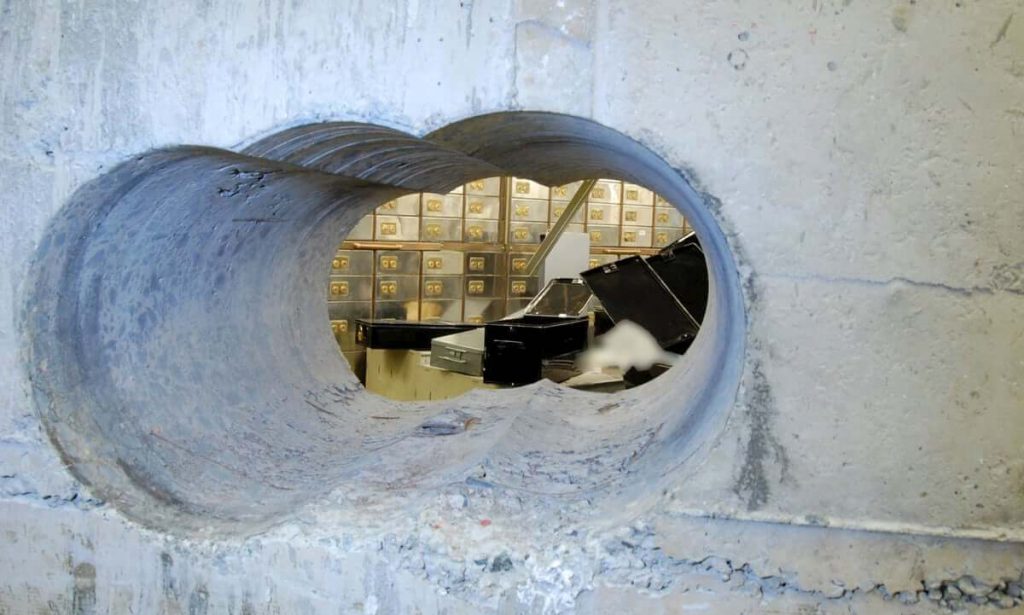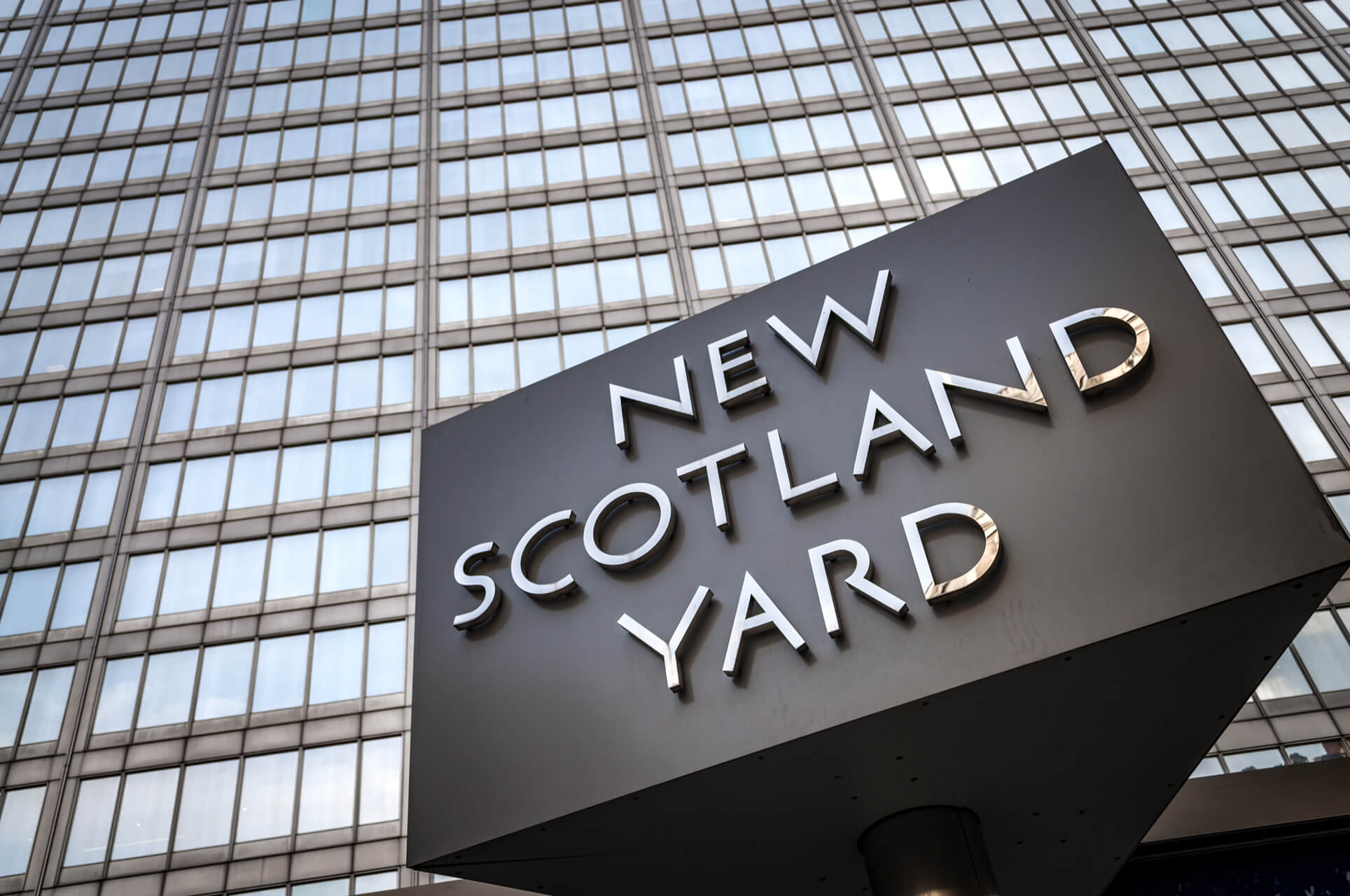It started with a fire. On Wednesday, April 1st, 2015, a gas main ruptured in the tunnels under London’s streets; tunnels that also housed London’s electrical and telecommunications cable networks. A spark from an electrical junction box ignited the gas, causing a fire that would burn for two days. Power and gas supplies were disrupted as smoke and fire bloomed from manhole covers. And, most importantly, dozens of false alarms were triggered throughout the area.
The fire was a genuine accident: the London Fire Brigade would later say that it was not an act of arson. But it still ultimately worked to the benefit of the burglars planning to rob the Hatton Garden security vault.
The next day, April 2nd, staff locked the doors to the underground safety deposit facility in Hatton Garden, London. The facility serviced many of the local jewelry stores in Hatton Garden; the area is home to 300 jewelry-related companies and 60 retail jewelry shops. The following day would be the start of a four-day Easter weekend and most of the local stores had locked away their jewels for safekeeping. The facility housed 996 safety deposit boxes and, while the total value isn’t known, the contents were estimated to be in excess of £150 million or $200 million.
The Job
The heist started with one of the gang, “Basil”, entering the building and disabling the alarms and cameras. Three more members of the team followed, while a lookout and driver waited outside in their plain white van. The burglars took the lift up to the second floor and disabled it, locking it in place. Returning to the first floor they forced open the doors to the elevator shaft and then made their way down the 14 foot shaft to the basement. But they weren’t in just yet. They still had to drill their way through a 20-inch-thick solid concrete wall.

It wasn’t easy, but the burglars were prepared and powered through the wall with a diamond coring drill in two and a half hours. However, behind the wall was the back of a steel cabinet that was securely bolted to the floor. The team was prepared for this too, having brought a pump with a 10-ton hydraulic ram, yet the ram broke before it could even dent the cabinet.
The burglars went out and returned with a second ram. It was not clear that this ram would work either, and two of the team lost their nerve and walked away from the crime. The others persisted and eventually made it into the vault. An intruder alarm had gone off during the break-in, but the police didn’t enter the building to investigate.
This was partially due to there being no signs of forced entry on the outside of the building and also due to the rash of false alarms caused by the recent fire. The 3-day job had not gone as smoothly as they’d hoped; instead of cleaning out the entire vault, they only managed to open 73 of the 996 boxes, meaning they had ‘only’ managed to take £14 million (approx. $22 million today) in jewels, precious metals, and cash.
The gang had gotten away with the biggest diamond heist in British history. The gauntlet had been thrown down to London’s Metropolitan Police. A month and a half later, on May 19th, the Met announced they’d arrested nine suspects.

The Investigation
Immediately following the heist, The Flying Squad, an elite investigative unit within London’s Metropolitan Police department, had approximately 50 officers on the case. The burglars had been careful, there was no usable forensic evidence in the vault or on any of the equipment they’d left behind. The investigation started with a thorough review of days’ and days’ worth of CCTV footage from the area, and it was here that the team got their first break.
While the burglars had used a very nondescript white van for the crime itself, they’d used a much more noticeable car to scout the area; a white Mercedes E200 with a black roof and alloy rims. Officers on the CCTV team noticed the car in the area and traced it by its license plate. This gave them their first suspect, the owner of the Mercedes, John Collins.
Another major mistake made by the burglars was their use of cell phones. During the burglary itself they had used walkie-talkies to communicate anonymously. But foolishly they’d done all their planning leading up to crime using their own cell phones. Starting with John Collins, the Flying Squad officers used call-data analysis to start to form a picture of who else was involved.
This early evidence was enough to get special approval to plant listening devices in the suspects’ cars. As the picture of who was involved started to take shape, the suspects were trailed by detectives, observed by lip-readers, bugged in their cars, and videotaped in their favorite bars. The thieves weren’t shy: the detectives recorded them bragging about their part in “the biggest robbery in the world.”
The final straw was to catch the criminals with the goods. The spoils of the burglary had already been divided up amongst the members of the gang, and some of them had already started offloading precious metals and jewels to fences and bagmen.
If any of the burglars had been arrested alone then the others would have been spooked and most likely have disappeared. So at 10am on May 19th, almost six weeks after the heist, 200 officers in riot gear stormed 12 addresses simultaneously. Burglars and accomplices alike were arrested, and £4.3 million of stolen goods (about a third of the total amount taken) was retrieved.
The Criminals
When the Metropolitan Police announced their arrests on May 19th, the media was stunned. The Hatton Garden burglary was already being romanticized as an exciting, daring heist in the style of the Great Train Robbery of 1963. People could imagine a Tom Cruise-style figure abseiling down the elevator shaft to the vault. Instead, what they got was a group of pensioners.

Brian Reader (nicknamed “The Master”) was 76 years old at the time of the robbery. He used his senior citizen’s bus pass, which gave him free travel, to get to the crime scene. John “Kenny” Collins was 75 and reportedly frustrated the other gang members by falling asleep during his lookout. Other gang members included Terry Perkins, aged 67, and Daniel Jones, a relatively young 58.
This gang of burglars was plagued by a range of ailments associated with men of their advanced age, from cancer and diabetes to deafness and forgetfulness. As Daniel Jones wrote from prison, “Run? Ah, they can barely walk. One has cancer—he’s 76. Another, heart condition, 68. Another, 75, can’t remember his name. Sixty-year-old with two new hips and knees. Crohn’s disease. I won’t go on. It’s a joke.”
The work of the Metropolitan Police resulted in an airtight case against the suspects. Seven members of the gang pleaded guilty to conspiracy to commit burglary and were each given a seven-year prison term in 2016. The eighth member, “Basil,” was unidentified for several years but eventually Michael Seed was arrested and found guilty of burglary and conspiracy to burglary. He was sentenced to 10 years in prison in 2019.
Was this the last crime of its type?
Old or not, this group of pensioners pulled off what remains Britain’s largest ever diamond burglary and came very close to getting away with it. Even now, only a third of the loot has ever been recovered. The story took the imagination of the public, both because of the daring nature of the crime itself and for the idiosyncratic characters who were behind it.
As former investigator Peter Spindler said, “They were analog criminals operating in a digital world.” He described the crime as, “probably the last of its type.”

